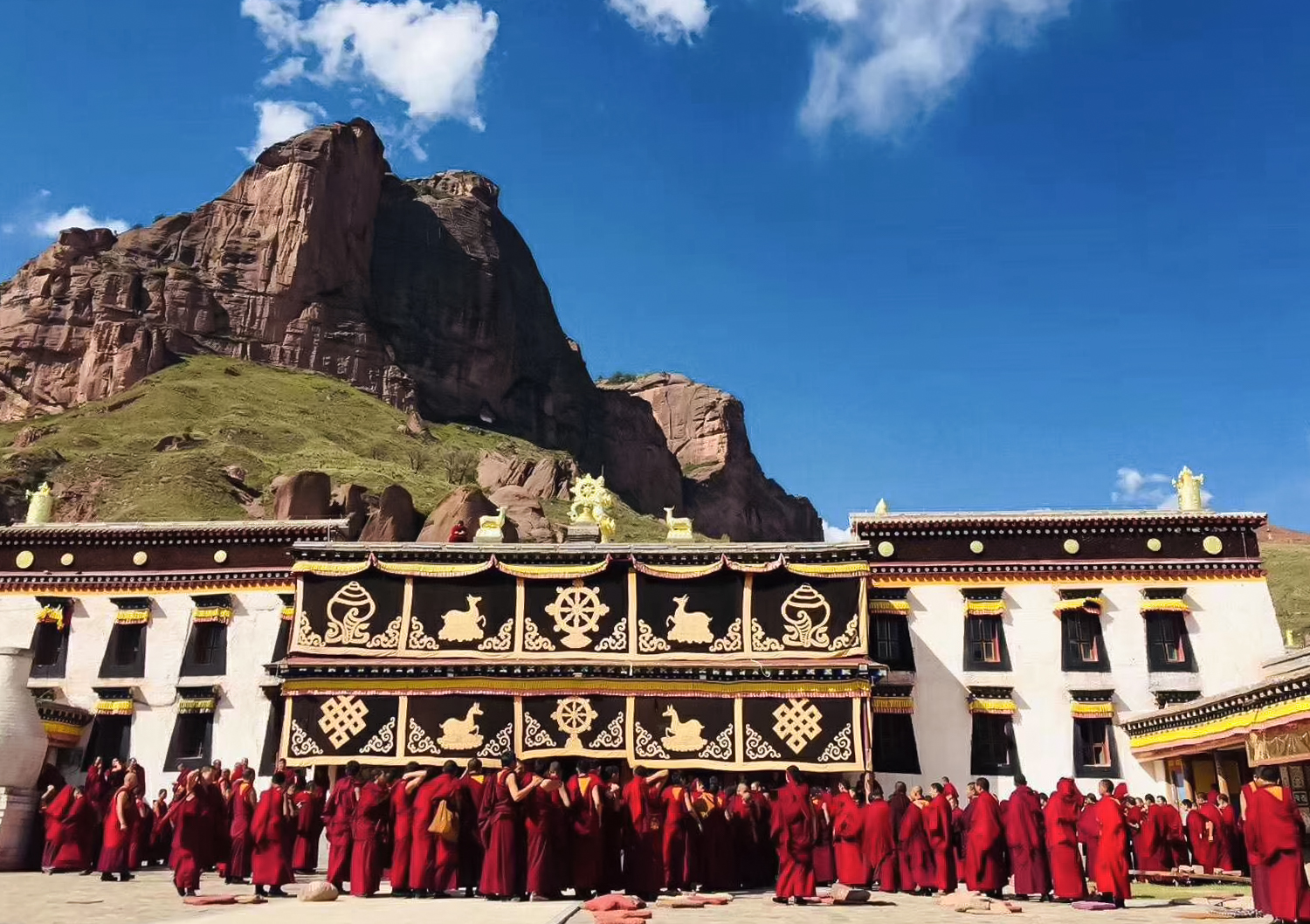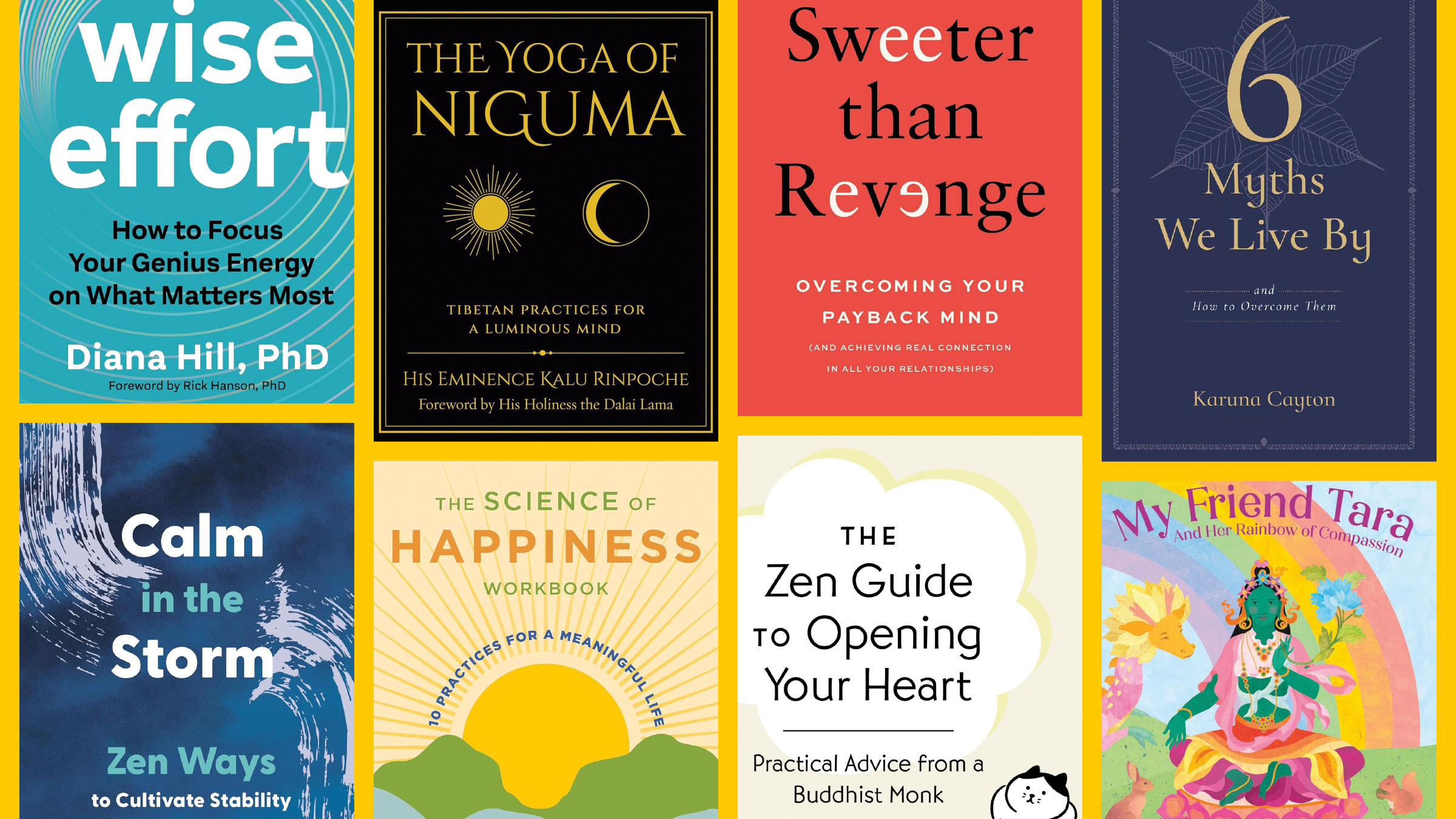The Ragya Kangyur
The story of a lost Tibetan scripture The post The Ragya Kangyur appeared first on Tricycle: The Buddhist Review.

 Ragya Monastery in eastern Tibet | Ragya Mahayana Buddhist Cultural Center.
Ragya Monastery in eastern Tibet | Ragya Mahayana Buddhist Cultural Center. In 2013, Tibetan monk Jigme Gyaltsen removed a volume from the shelf of a monastery in a remote region of eastern Tibet. Gyaltsen, a senior monk from Ragya Monastery in Tibet’s Amdo Golok region, had spent the past decade searching for a set of lost scriptures known as the Ragya Kangyur, a special edition of the Tibetan Buddhist canon produced by Ragya Monastery two hundred years ago. Was this volume part of the text for which he had searched so long? The monastery’s heirloom text had been lost for half a century, and many believed it was gone forever. But Gyaltsen believed in the Kangyur’s survival because he believed in the survival of the buddhadharma.
The Ragya Kangyur had been the crowning achievement of Shingza Pandita (1759-1824), the abbot of Ragya Monastery and the initiating lama in the line of Shingza reincarnations. An outstanding geshe educated at Sera Monastery, one of the “great three” Gelug university monasteries of Tibet, Shingza Pandita was a brilliant scholar and renowned debater. (The famous master Gungthang Tenpai Dronme, a contemporary of Pandita’s at Sera, wanted to debate his fellow monk but was stopped by his teacher, who worried that Dronme would lose.) According to Shingza Pandita’s current incarnation, Shingza Rinpoche, who is now the head lama of Ragya Monastery, Pandita had a very simple reason for creating the Ragya Kangyur: “to earn merit for his monastery.”
The Kangyur canon contains over a thousand texts, including sutras, tantras, and other scriptures, all believed to be the direct teachings of the Buddha. Between the eighth and thirteenth centuries, translating the canon into Tibetan from Sanskrit became a national project. Then, when block print technology came to Tibet in the 15th century, creating one’s own edition of the Kangyur and reprinting it became the ultimate merit-making activity. But it was incredibly expensive to do so; a royal treasury was needed to finance this sort of undertaking. By the end of the 18th century, there were only three printings of the Kangyur in eastern Tibet: one by the Chone royal family, one by the Derge royal family, and one by the Jang royal family.
 The Ragya Kangyur | Courtesy BDRC
The Ragya Kangyur | Courtesy BDRCShingza Pandita had no royal treasury to reprint his own version for Ragya, but he did have the right treasurer to get the job done. Shingza Pandita commissioned the project in 1814, and it took over 100 carvers, numerous scribes, inkers, and illustrators, six long and difficult years to produce the 33,000 individual woodblocks for the 66,000 pages that would become the Ragya Kangyur. The scriptures were the pinnacle of nineteenth-century cultural achievement and, in the karmic currency of Tibet, the greatest merit-making activity in service to the dharma. With its production, Shingza Pandita put Ragya on the Tibetan map forever—and treasurer Jampa Sungrab played a crucial role.
According to local lore, midway through the project, the woodcarvers began to suspect that Ragya Monastery might not have the fortune required to compensate them properly for their work. Jampa Sungrab got wind of their suspicions and asked them to stop carving and instead help clean the monastery’s treasury, where he had made preparations to trick them. Sungrab painted over clay statues with gold to convince the carvers they need not worry about payment, and he also asked them to count bags of money. After the bags were counted, the money was sent out, poured into new bags, and sent back to the treasury to be counted again. Convinced that Ragya had immense wealth, the carvers stayed on and completed the Kangyur. Jampa Sungrab also told them that they would receive compensation in gold according to the weight of the sawdust shavings, so the carvers engraved the letters on the block prints as deeply as they could. With the deep carvings, the Kangyur woodblocks were supposed to last for centuries.
But in 1958, the People’s Liberation Army came to eastern Tibet, turning Ragya Monastery and the region upside down. They destroyed the Ragya Kangyur—both the scriptures and the woodblocks used to print them. In 1966, as the Cultural Revolution swept through the People’s Republic of China, the Red Guards targeted all vestiges of religion and purged anything Buddhist that was still left at Ragya Monastery. According to the Tibet Times, nothing at Ragya Monastery survived the purges, not a single thangka. They even destroyed the printing house where, eight years before, the People’s Liberation Army had fed the sacred woodblocks to kitchen fires for tea, which the local people were forced to drink.
Later, in the 1980s, after the Chinese Communist Party attempted to repudiate the Cultural Revolution and launched a series of economic and political reforms, the monks of Ragya tried to repopulate their home with the accouterments of a Buddhist monastery. With nothing left in Ragya, they had to seek statues and thangkas from other monasteries. As for the Ragya Kangyur, there was still no sign. It was as if it had never existed.
 Shingza Rinpoche at Ragya Mahayana Buddhist Cultural Center in Virginia | Photo courtesy RMBCC
Shingza Rinpoche at Ragya Mahayana Buddhist Cultural Center in Virginia | Photo courtesy RMBCCIndeed, Shingza Rinpoche, Ragya Monastery’s current head lama who now lives in exile in his Ragya Mahayana Buddhist Cultural Center in Virginia, said, “When we lost the Kangyur, it became so that people didn’t believe there had ever been a Kangyur. They thought it was just a rumor.”
Enthroned on the seat of Ragya Monastery as a boy, Shingza Rinpoche spent the early years of his monastic training memorizing scriptures and listening to stories about the Ragya Kangyur, but he never saw it in person. Even so, Shingza Rinpoche says he always believed a copy still existed and would be found one day. He never doubted its existence, either.
When he was a teenager at Ragya, a devotee who came to see him had brought a special gift: a woodblock of Tsongkhapa’s Collected Works. Before commissioning the Ragya Kangyu, Shingza Pandita had first tested the woodcarvers’ skill by asking them to make woodblocks for Tsongkhapa’s Collected Works. If one of the Tsongkhapa woodblocks had survived, perhaps so had the Ragya Kangyur. There was also a catalog written by the seventh Panchen Lama Tenpai Nyima (1782–1853). The catalog, which has been digitized by the Buddhist Digital Resource Center (BDRC), is a history and survey of the Ragya Kangyur that details not just its contents but also the names of the individual woodcarvers.
Jigme Gyaltsen—a monk, educator, and social entrepreneur who has devoted himself to ensuring the vitality of the Tibetan language and Tibetan Buddhism—also believed in the Ragya Kangyur’s survival. According to Michael Sheehy, former Director of Research of BDRC, when Gyaltsen was a child monk, his teacher told him about a copy of the Ragya Kangyur that still existed. But all Gyaltsen knew was that it was somewhere in a region of Amdo—home to over 70 monasteries. In the 1990s Ragya Monastery decided it wanted to reprint the Kangyur, so Gyaltsen decided to search Amdo himself. He traveled throughout the region in hopes of finding a copy hidden or languishing in a monastic library somewhere, or perhaps hidden inside a stupa or reliquary for safekeeping.
 Jigme Gyaltsen, 2006 | Photo by Tenzin Dickie
Jigme Gyaltsen, 2006 | Photo by Tenzin DickieAs told by Gyaltsen to BDRC staff, one day in the fall of 2013, he came across a remote monastery on the eastern edge of Tibet that had a rich surviving library. (To respect the privacy of the monastery, BDRC has chosen not to identify it by name.) Inside this monastic library, surrounded by scores of scriptures on the shelves around him, Gyaltsen picked up a volume at random and unwrapped it to find the pages of the Ragya Kangyur, still in good condition, reflecting the light of day after a long time in the dark. Buried among this monastic collection was the complete set of all 104 volumes of the Ragya Kangyur.
Jigme Gyaltsen and the Ragya monks got government permission to scan and reprint the Ragya Kangyur so that copies could be widely distributed and secured, protecting it from loss ever again. It took six years to carve the physical woodblocks required to print the Ragya Kangyur, and eighteen days to scan the precious text. From these high-quality scans, they reprinted the Kangyur, and shared copies with other monasteries and institutions. One copy, of course, has pride of place at Ragya Monastery, which finally has its Kangyur again.
Time and time again, the story of dharma has been a story of loss followed by rebirth. The Ragya Kangyur, rescued and resurrected thanks to Jigme Gyaltsen’s dedication and the BDRC archive, now stands as an exemplar of what digital preservation can offer—universal access as well as enduring preservation. Today Shingza Rinpoche himself, at his desk in his center in Virginia, can read it online anytime he wants, along with anyone else in the world.
 Digitizing the Ragya Kangur | Photo courtesy BDRC
Digitizing the Ragya Kangur | Photo courtesy BDRC
Get Daily Dharma in your email
Start your day with a fresh perspective

Explore timeless teachings through modern methods.
With Stephen Batchelor, Sharon Salzberg, Andrew Olendzki, and more
![]()
Thank you for subscribing to Tricycle! As a nonprofit, we depend on readers like you to keep Buddhist teachings and practices widely available.
This article is only for Subscribers!
Subscribe now to read this article and get immediate access to everything else.
Already a subscriber? Log in.

 UsenB
UsenB 































